Seasons – December 2022
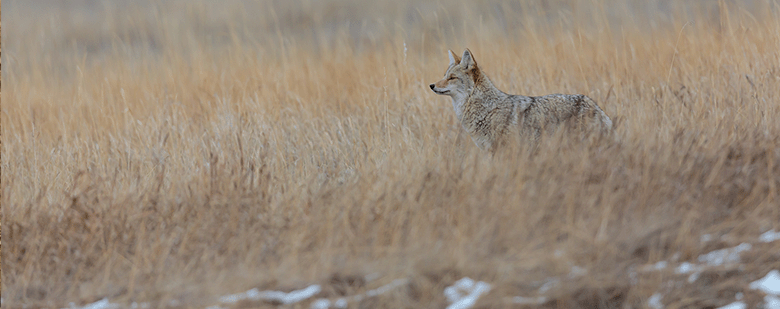
From the Plateau Land & Wildlife Management Team
We’ve seen a few cold snaps here in Central Texas, and we are all getting in the holiday spirit. This time of year is full of joy, relaxation, and celebrations.
With the end of 2022 on the horizon, now is a natural time for evaluation of our successes and challenges – a time of reflecting and looking forward. We encourage you to think about your land and wildlife management journey as we come to the end of the year. This Seasons is full of timely tips and year-end considerations for Texas landowners.
As you tie your final ribbons on gifts and reflect on the closing of another year, be sure to add wildlife management valuation to your list of those things you did right this year – because an investment in the enjoyment of your land, the heritage of land ownership, and protecting our natural resources is something that will pay dividends for many more years to come.
Of course, if you have questions or would like to discuss your property tax options with an experienced member of the Plateau team, please give us a call at (512) 894-3479! We will be here when you need us.
Happy holidays to you and yours.
Until next Seasons,
Table of Contents
End of the Year Wildlife Management Activities
Did a Wolf Just Cross the Road?
Setting up for Game Camera Success
Winter Wildlife Management Webinar Series
Recovering America’s Wildlife Act
News for Texas Landowners
END OF THE YEAR WILDLIFE MANAGEMENT ACTIVITIES
By Kameron Bain, Landowner Account Manager
Don’t let 2023 sneak up on you before you complete your 2022 wildlife management activities!
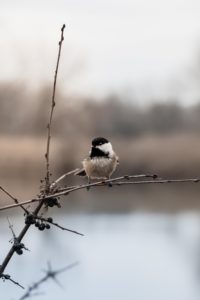 As the end of the year rapidly approaches, we want to make sure you are on track to finish your qualifying wildlife management activities and that they are well documented. The good news is, if you still need to meet any of your wildlife management requirements for 2022, it’s not too late. There are plenty of winter activities to choose from, and of course, Plateau is always here to help when you need us.
As the end of the year rapidly approaches, we want to make sure you are on track to finish your qualifying wildlife management activities and that they are well documented. The good news is, if you still need to meet any of your wildlife management requirements for 2022, it’s not too late. There are plenty of winter activities to choose from, and of course, Plateau is always here to help when you need us.
Year-End Wildlife Management Activities
- Brush management
- Remote camera wildlife survey
- Imported red fire ant control
- Deer, wild pig and exotic harvest
- Re-seeding wildflowers and native grasses
- Strip mowing and discing
- Chemical control of prickly pear
- Cut-stump herbicide treatments
- Tree and shrub planting
- Brush pile construction
- Wildlife products and installation (food, water, shelter)
- Annual Report ($550): Let the experienced team at Plateau professionally prepare this important report and rest assured that it’s been done right.
- Wildlife Management Activities Check-Up ($595): Assess your property, documentation and current activities with a Plateau biologist to ensure compliance.
- Consulting Site Visit ($795): Spend a few hours with a Plateau biologist touring your property. This personal site visit is customized to the characteristics of your property, its wildlife and you.
Uncertain about whether or not you’re meeting wildlife management requirements? Plateau can help! All of our Plateau products and services are designed to fulfill your wildlife management activity requirements. If you have questions about any of your activities, or are interested in purchasing a Plateau product or service, please contact us at (512) 894-3479 or email [email protected].
DID A WOLF JUST CROSS THE ROAD?
Guest Feature by Katherine Watson, Administrative Assistant
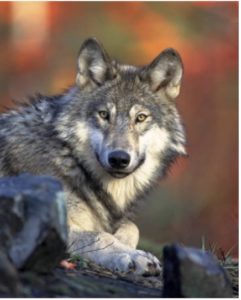 It is not uncommon for someone living on a ranch or on the outskirts of a city to excitedly declare that they, or someone they know, recently saw a wolf cross a road or property. Mere mention of these animals seems to conjure up a variety of feelings ranging from fear and animosity to curiosity and compassion. The animal’s notorious reputation stems from its position as a large, opportunistic apex predator. Traditionally known to feed on deer, elk, and bison, wolves began supplementing their diet with cattle, sheep, and goats (i.e. the livelihood of early settlers). Their eerie, mournful howl and habit of hunting in packs contributed greatly to early folklore and legends originating even before the settlement of Texas. Some believe that the animal is still lurking around these parts and is responsible for the occasional livestock kill.
It is not uncommon for someone living on a ranch or on the outskirts of a city to excitedly declare that they, or someone they know, recently saw a wolf cross a road or property. Mere mention of these animals seems to conjure up a variety of feelings ranging from fear and animosity to curiosity and compassion. The animal’s notorious reputation stems from its position as a large, opportunistic apex predator. Traditionally known to feed on deer, elk, and bison, wolves began supplementing their diet with cattle, sheep, and goats (i.e. the livelihood of early settlers). Their eerie, mournful howl and habit of hunting in packs contributed greatly to early folklore and legends originating even before the settlement of Texas. Some believe that the animal is still lurking around these parts and is responsible for the occasional livestock kill.
Two species of wolves were historically prevalent in Texas. The gray wolf (Canis lupis) (pictured) ranges in average size from 60 to 145 pounds, while the smaller red wolf (Canis rufus) ranges from 45 to 80 pounds. The gray wolf generally inhabited the western 2/3 of the state and the northern region of the United States, leaving the red wolf to roam the central and eastern parts of the state and southeastern portions of the country.
Between the years 1889 and 1905, wolves were common and so fiercely hated by West Texas ranchers that special bounties of anywhere from $10 to $50 ($336 to $1,680 in today’s dollars) were paid by the larger ranches to professional wolf hunters for each wolf killed. On other ranches, wolf hunters were salaried and paid monthly for their efforts. Because of intense hunting pressure, gray wolves were completely eliminated throughout Texas by the 1940s, with a severe population decline over the western region of the United States. Today, the red wolf has been nearly extirpated throughout the southeastern U.S. with only 19-21 individuals estimated to remain in the wild – excluding captive breeding programs.
The biological influence of this species remains in Texas through what has been, apparently, historical hybridization with coyotes – as confirmed by DNA analysis on coyotes living on Galveston Island. Due to the precipitous decline in wolf populations over the last 120 years, both species have been listed as endangered under the Federal Endangered Species Act and recovery and re-introduction plans are on-going in several states. As a result of reintroduction efforts, now managed at the state level rather than by the federal government, the gray wolf is no longer listed as endangered in the northern Rocky Mountains of the United States. Be that as it may, due to the lingering concern by ranchers over potential livestock loss, such efforts are not without substantial controversy.
Before the decline of wolves began, coyote populations were suppressed due to the inability of the coyote to compete with its larger cousin. However, as the wolf populations declined, Mother Nature’s revenge began to exert its effects with an increase in coyote populations moving in to fill the vacant predatory niche. While the coyote ranges in size from 15 to 50 pounds, it can interbreed with domestic dogs, potentially producing a hybrid offspring whose size resembles a species of wolf that once ruled the Lone Star State.
So the next time a “wolf” sighting comes up in the conversation, the culprit is most likely just a large coyote, coyote-dog hybrid, or an image of a legendary creature that the observer’s subconscious has blurred into what he would have actually liked to have seen – a ghost from the past.
LANDOWNER WEBINAR: SETTING UP FOR GAME CAMERA SUCCESS
Presented by Certified Wildlife Biologist James A. Hall
As winter approaches and cold weather settles in, many landowners pull their scouting cameras and toss them in the corner of the garage until the following summer. That may be a mistake; a strategy of year-round monitoring of your property can help you learn a lot about the wildlife in your area, and how they use your land.
Most folks associate game and trail cameras with photographing for deer, primarily pictures of bucks. However, switching it up a little to target a wide variety of native species can lead to insights about your property, and can be an enjoyable activity through the cold and dreary months.
Join Certified Wildlife Biologist James A. Hall as he discusses tips for setting up game cameras, best practices for placements, and how you can maximize your trail cameras to see the most wildlife on your property.
WILDLIFE MANAGEMENT WEBINAR SERIES: COMING SOON

You’re invited to our FREE Wildlife Management webinar series this winter and spring!
Whether you’re already a Plateau customer or someone that wants to learn more about Wildlife Management, everyone is invited to join us for our FREE 2023 Wildlife Management Winter Webinar Series. Connect with experts and other Texas landowners in Wildlife Management and learn all about:
Wildlife Management Exemption, Wildlife Management 101, Qualifying Wildlife Activities, Property Taxes, Wildlife Management Plans, Annual Reports, County Requirements, Texas Regional Topics, Open Questions & Answers and more! Stay tuned for registration opportunities!
GUEST FEATURE: RECOVERING AMERICA’S WILDLIFE ACT
Content produced by Texas Alliance for America’s Fish & Wildlife
Nationwide, experts have identified more than 12,000 Species of Greatest Conservation Need, including over 1,300 here in Texas. The majority of these are at-risk fish and wildlife — like the Texas horned lizard, Guadalupe bass, and Red-headed woodpecker.
Pending landmark bipartisan legislation called The Recovering America’s Wildlife Act, (RAWA),H.R.2773, would provide $1.3 billion per year nationally to states, including more than $50 million to Texas, to recover imperiled fish and wildlife species and restore habitats.
The funding would come from existing revenues, meaning no new taxes, and the funds will be administered by local agencies like Texas Parks and Wildlife Department to fund projects conducted by conservation organizations, land trusts, universities, nature centers, and others.
Now supporters are trying to get the Act to the finish line. The bill has sponsors from both parties in the U.S. House, where it’s already passed, and in the Senate, where it’s pending, but must pass by the end of December, 2022.
The Recovering America’s Wildlife Act would be the most significant investment in wildlife conservation in a generation — it would fund proactive, voluntary efforts to address the nation’s looming wildlife crisis and conserve our natural heritage for future generations.
Learn more here.
News for Texas Landowners
Natural Resource Institute helps assess value of Texas’ ecosystem services
Article by Sarah Fuller, Texas A&M AgriLife Communications

COLLEGE STATION, Texas — Can you put a price on clean air, water or white-tailed deer? The Texas A&M Natural Resources Institute, NRI, partnered with other agencies to study and assess the value of these “commodities of nature” and subsequent losses associated with land use changes. These commodities of nature, or ecosystem services, are the set of functions benefiting human wellbeing, encompassing many life-sustaining outputs such as climate regulation, air purification and pollination. Many of these ecosystem services are traditionally considered shared and free to society. As a result, these services, such as clean air, clean water and flood control provided by healthy forest, range and wetland ecosystems, are commonly overlooked. The assessment is critical because Texas experienced a 15.9% growth in population—more than any other U.S. state—between 2010 and 2019. With no signs of slowing, this rapid growth and subsequent development places increased strain on the state’s natural resources and the services they provide all Texans.
Article By Jessica Domel for Texas Farm Bureau
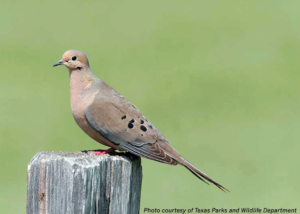
The second half of the regular dove hunting season opens Dec. 17, and experts say hunters should have good chances of bagging some birds. “As sparse as it may have been for the majority of the state in the first season, the way this thing has played out, it should lead up to a really good second season,” Bobby Thornton, co-founder of the Texas Dove Hunters Association, said. “Generally speaking, drier conditions usually lead to a really good breeding crop. We’re anticipating having lots of birds having gone through the early stages of infancy to now being here for the second season. This could lead up to a really good season.”
Although the second part of the season can provide some great opportunities for hunters, it’s typically not the most popular.
What a switch to El Niño could mean for central Texas weather in 2023
Report by David Yeomans for KVUE
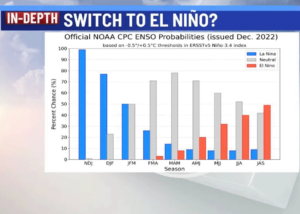
AUSTIN (KXAN)– The predicted changeover from the current multi-year La Niña pattern to El Niño next year could have large-scale changes on our local weather.
The warmer, drier-than-normal weather, made more likely by La Niña, has indeed had a hand in our current drought conditions, as well as in Lake Travis levels dipping to their lowest since 2015. We first warned you last week, however, how new projections from the NOAA Climate Prediction Center call for the current “triple-dip” three-year La Niña pattern to end in 2023, and an El Niño pattern to begin. The predicted change to El Niño conditions means that waters in the Eastern Pacific Ocean near the Equator warm up, shifting the storm track toward Texas and supercharging systems with more moisture and rainfall.
2022 Ag Law Year in Review
Report by Tiffany Dowell Lashmet for Texas Ag Law Blog

I always enjoy the chance to look back over the year and recap the biggest agricultural law developments. There was certainly no shortage agricultural law happenings in 2022. Today, we’ll look at the national agricultural law scene, and next Monday, we will focus specifically on Texas. If you want to hear more about some of the biggest national ag law stories of the year, click here for a podcast episode I did with my friend, Paul Goeringer. With that, let’s get started! The topic about which I have gotten the most questions and had the most presentation requests this year is carbon contracts. Currently, many agricultural producers around the nation are being approached by companies seeking to enter into contracts related to carbon credits. Essentially, the company agrees to pay a producer to undertake a production practice that is expected to increase the amount of carbon stored in the soil…
TPWD proposes potential changes to Texas hunting regulations
Article By Jessica Domel for Texas Farm Bureau
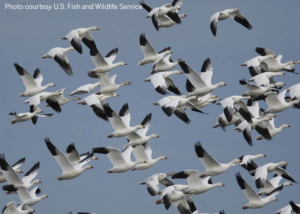
The Texas Parks and Wildlife Department (TPWD) gave the public a brief preview of potential changes to hunting regulations for the 2023-24 seasons. The first proposed change presented to the Texas Parks and Wildlife Commission in early November was the statewide closure of the Light Goose Conservation Order. A conservation order is not a hunting season. It is a special management action needed to control certain wildlife populations when traditional management programs are unsuccessful in preventing an overabundance of the population.
The Light Goose Conservation Order was a special amendment to the Migratory Bird Treaty Act that allows U.S. Fish and Wildlife to authorize states to allow additional hunting opportunities.
Public Access Lease Opens for Guadalupe River Trout Fishing
News Release for Texas Parks and Wildlife

AUSTIN – Texas anglers have access to a prime location for rainbow trout fishing during the cold weather stocking season through a Texas Parks and Wildlife Department (TPWD) “no fee” public access lease on the Guadalupe River. Camp Huaco Springs, located between New Braunfels and Sattler, features nearly a half-mile of bank access along alternating pools and riffles on the Guadalupe River. Anglers can use the bank, which is gently sloped and rocky, or wade fish both upstream and downstream to take advantage of a low-water dam at the upper end of the property or a deep pool at the lower end. They can also launch non-motorized boats, canoes, kayaks or other floatable devices for the purpose of fishing.
Public access opens Dec. 2 and is available 30 minutes before sunrise to 30 minutes after sunset through March 4…
By Susan Himes, Texas A&M AgriLife Communications
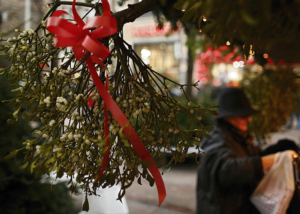
Mistletoe may be a welcome holiday sight when hung over a doorway if a loved one is near. But it can be an unwelcome intruder when found in your trees, according to a Texas A&M AgriLife Extension Service horticulturist. “Mistletoe is a hemiparasite – a semi-parasitic plant,” said Allison Watkins, AgriLife Extension horticulturist for Tom Green County. “It makes its food from photosynthesis, but the roots grow into the host tree, sucking water and minerals out from the sap.”
In other words, you likely do not want to see mistletoe growing on your favorite shade tree or prized ornamental. However, mistletoe can survive as long as the tree it inhabits. So, some mistletoe alive today may still be around in 100 years. One type of mistletoe you commonly see used as decoration over the holidays is in the family Phoradendron, which appropriately translates to “thief of the tree” in Greek. Mistletoe has been used across various cultures throughout history for everything from warding off demons from entering a doorway to protecting babies from being stolen from their cribs in the night by fairies.
News Release by TPWD
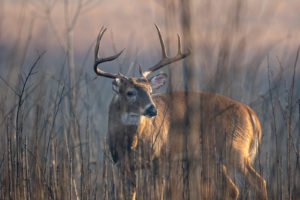
Mistletoe may be a welcome holiday sight when hung over a doorway if a loved one is near. But it can be an unwelcome intruder when found in your trees, according to a Texas A&M AgriLife Extension Service horticulturist. “Mistletoe is a hemiparasite – a semi-parasitic plant,” said Allison Watkins, AgriLife Extension horticulturist for Tom Green County. “It makes its food from photosynthesis, but the roots grow into the host tree, sucking water and minerals out from the sap.”
In other words, you likely do not want to see mistletoe growing on your favorite shade tree or prized ornamental. However, mistletoe can survive as long as the tree it inhabits. So, some mistletoe alive today may still be around in 100 years. One type of mistletoe you commonly see used as decoration over the holidays is in the family Phoradendron, which appropriately translates to “thief of the tree” in Greek. Mistletoe has been used across various cultures throughout history for everything from warding off demons from entering a doorway to protecting babies from being stolen from their cribs in the night by fairies.
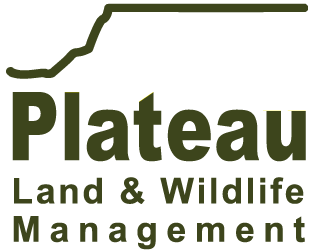




Sorry, the comment form is closed at this time.